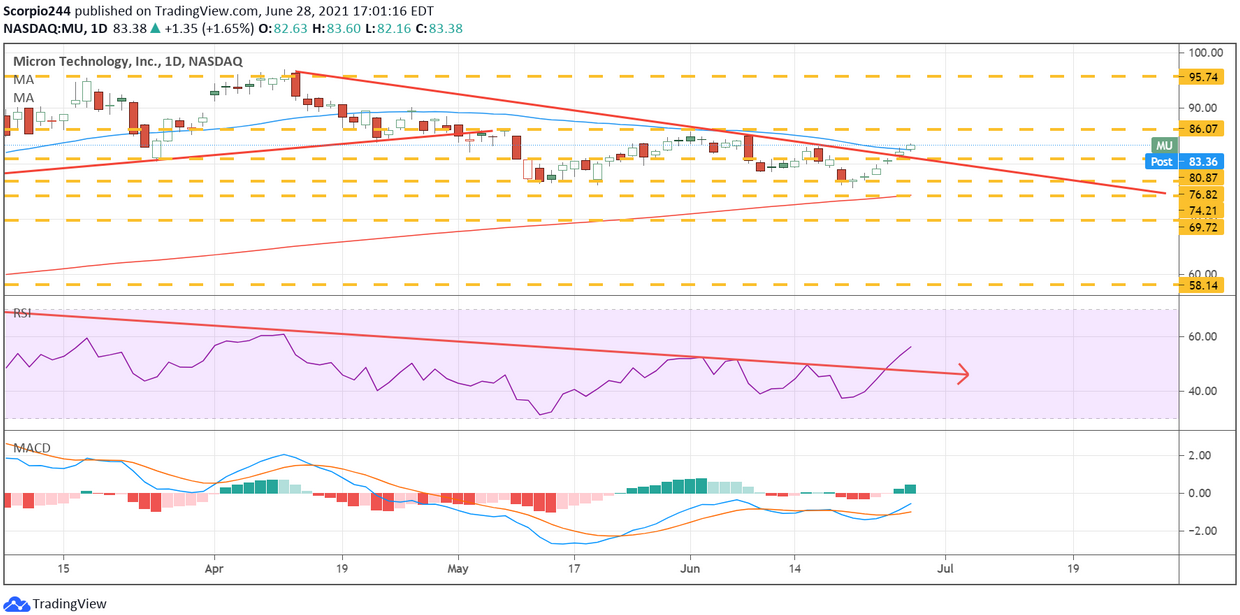The S&P 500 advanced yesterday, as the rally in the mega-cap names was just enough to offset the steep decline in the reflation assets.
It is hard to say how long a rotation of such could continue. Clearly, the divergent nature of the sectors appears to tell us that the market is becoming more and more fragmented, meaning leadership is clearly narrowing, and not all stocks can “win” together.
For example, the equal-weight Invesco S&P 500® Equal Weight ETF (NYSE:RSP) fell Monday by 42 bps and has not fared as well since it peaked on May 10.
The market will face a major problem as we move into the second half of 2021, and it seems undeniable, that it is expensive and that growth will drop dramatically not only for the S&P 500, but for the NASDAQ. So either growth rates will pick up, or the market will grow more and more expensive. They aren’t cheap currently.
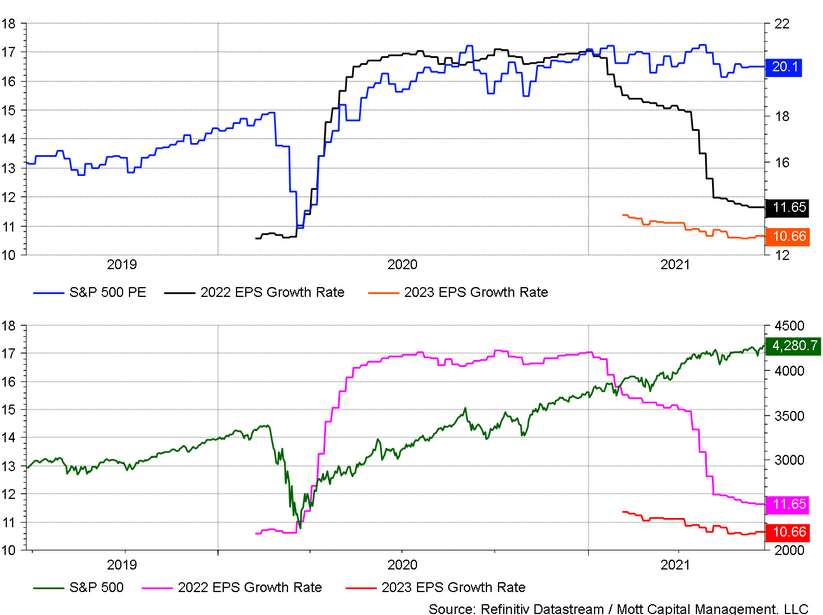
If you think growth rates don’t matter, they do. PE ratios tend to anticipate changes in growth rates by about 3 months ahead of time. The PE on the S&P 500 has already started to contract. How much it will contract, and whether or not earnings will support the current valuation, is the key.
I don’t have the answers yet.
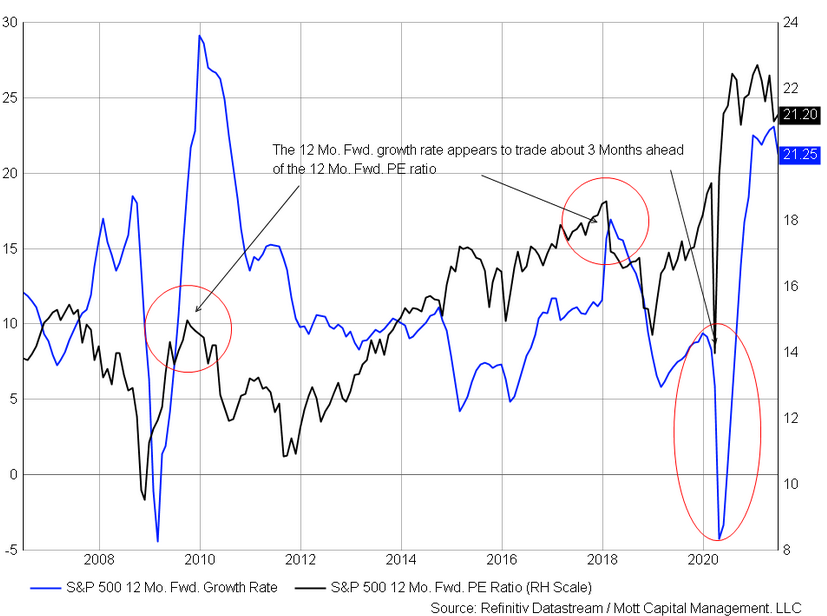
NASDAQ Breadth
The percentage of stocks above their 50-day moving average fell Monday for the NASDAQ composite, which is very surprising given the nearly 1% gain.
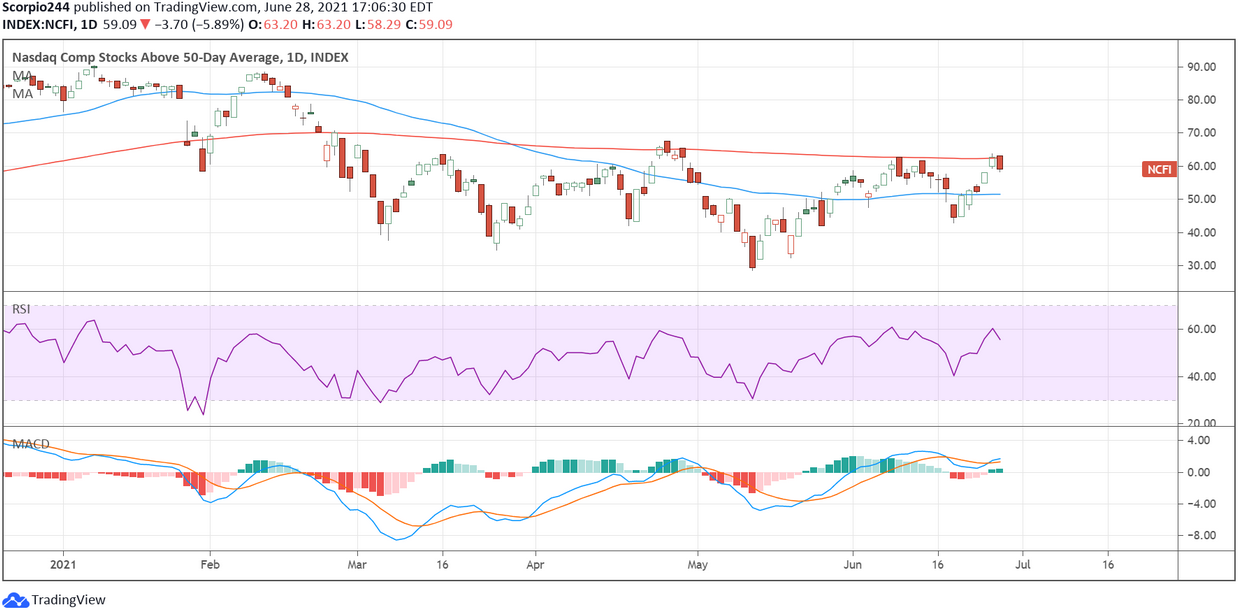
VIX
Even odder was that the VIX, VXN, and VVIX were all up Monday. That doesn’t happen too often when the equity indexes are trading higher. Especially odd was the strength in the VXN, with the NASDAQ 100 up by more than1%. If this happens again today, your warning antenna better rise.

S&P 500
There has been a shift in the S&P 500 trend, off the March 2020 low, which seems noticeable, but doesn’t suggest anything at this point. Could the S&P 500 rally all the way to 4,350 and, in theory, retest the breaking of the uptrend sometime by July 1? It seems possible. Does a move higher mean only good things are happening in the broader market? Of course not.

JPMorgan
JPMorgan Chase & Co (NYSE:JPM) announced after the close it would raise its dividend by $0.10 to $1.00 per year. I’m not sure if that was what the market was looking for—the shares up slightly after hours.
The pattern in the chart was certainly not bullish looking, as it resembled a bear flag. It doesn’t mean the stock can’t go up and the pattern doesn’t work out. But if it turns out to be a bear flag, then the stock could easily fall another 12% to roughly $134.

Intel
Intel (NASDAQ:INTC) had a solid day and was growing closer to the breakout I wrote about a couple of weeks ago. All it has to do is clear some resistance at $58 to be on its way up.
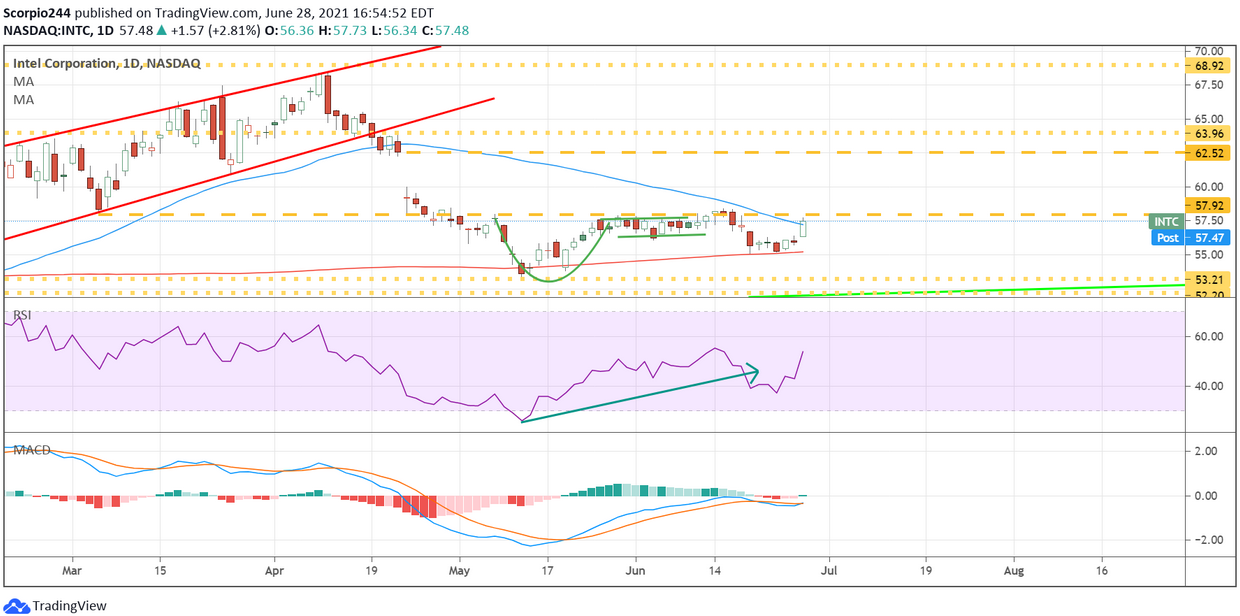
Micron
Micron Technology (NASDAQ:MU) will report this week, and nobody knows what the company will say or how the guidance will turn out. But again, over the past two weeks, there has been some decent put buying in the name.
Please don’t get me wrong; there has been call buying too. The difference between the put and call activity is that most of the call activity has around the $90 to $95 strike prices. This suggests the calls are trading for cheaper premiums, making call activity more speculative in nature because a trader doesn’t need to place as much capital.
The put activity has been at strike prices closer to the stock’s current price, which means the premiums are more expensive, and the trader needs to lay out more capital. Some readers of my articles will get angry and think I am just choosing sides when in reality, I am just looking at the side of the market that is assuming more risk.
More bets from a capital perspective appear to be getting places on the stock falling then rising. But, hey, no one is perfect, and it is easy to be wrong.
